Plant breeding and biotechnology are essential for improving plant productivity, health, and adaptability to various environments. Plant breeding involves the selective crossing and selection of plants with desirable traits to produce new varieties more suitable for specific purposes. Biotechnology, on the other hand, involves using scientific techniques to manipulate the genetic makeup of plants, animals, and microorganisms to produce improved or novel products.
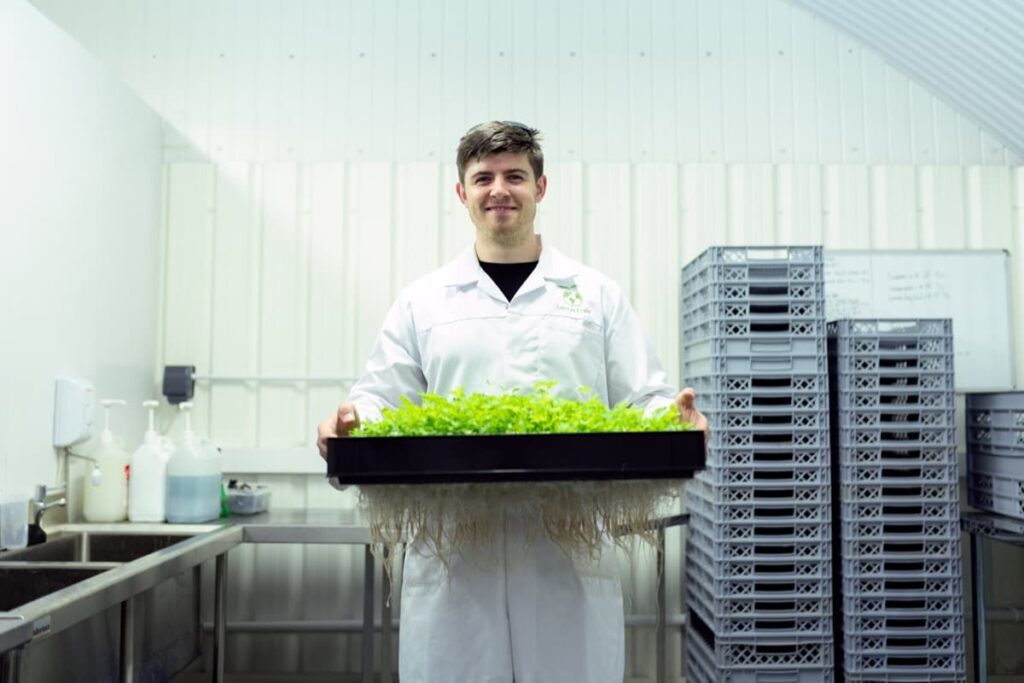
Biotechnology is a rapidly evolving branch of modern science. Traditional breeding methods can benefit from new ideas, improved tools, and novel techniques. Biotechnology is a powerful tool for developing new crop varieties in response to changing agricultural needs. One of the main goals of plant breeding is to develop crops resistant to pests and diseases and to tolerate abiotic stresses such as drought and extreme temperatures.
It helps to increase the yield and quality of crops, as well as reduce the need for expensive pesticides and fertilizers. Biotechnology also plays a vital role in plant breeding by providing tools for precisely modifying plant genes. In addition, it includes techniques such as genetic engineering, which allows for introducing specific traits into plants by inserting foreign genes into their genomes.
Plant breeding and biotechnology are essential for addressing global food security challenges. By 2050, the world’s population is expected to reach 9.8 billion. These tools allow for the development of crops more resistant to environmental stresses, such as drought and extreme temperatures. They can also help improve crops’ nutritional value to address malnutrition issues.
Role of plant breeding and biotechnology
What is plant breeding?
Plant breeding is the process of developing new varieties of plants with specific characteristics or traits that are desirable for a particular purpose. It may include increased yield, disease resistance, drought tolerance, or improved flavor. Plant breeders use crossbreeding, hybridization, and genetic engineering techniques to develop new plant varieties that meet specific criteria. The goal of plant breeding is to improve the quality and productivity of crops as well as to develop new varieties that can adapt to changing environmental conditions.
In case you missed it: Blockchain Technology in Agriculture: A Way to Future Sustainability and Role in Supply Chain
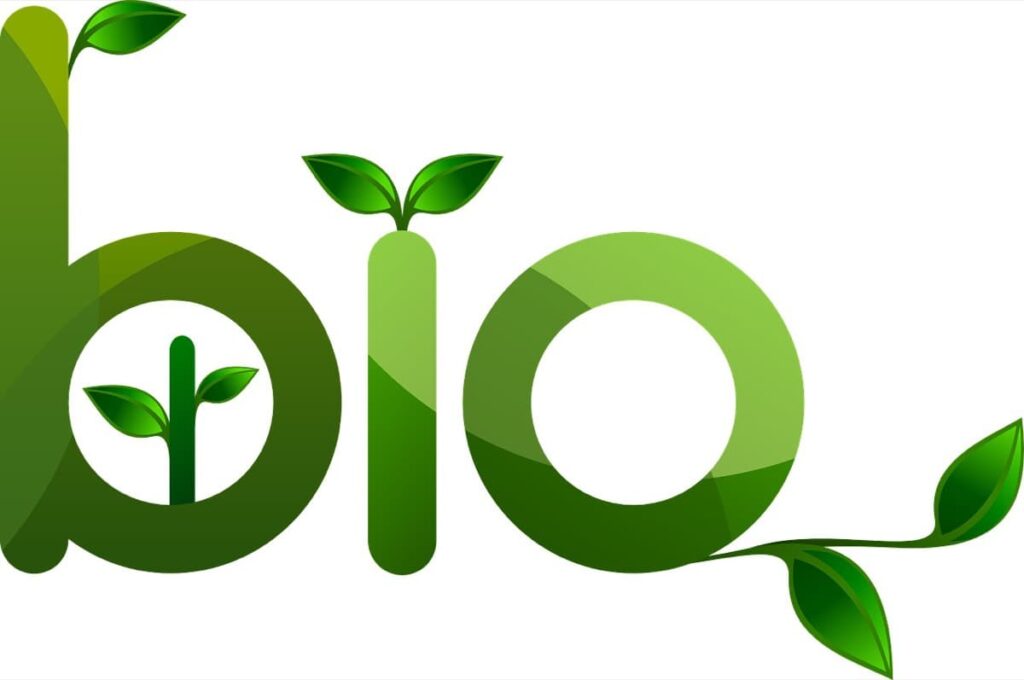
What is biotechnology
Biotechnology is the application of biological processes, organisms, or systems to create or modify products or processes for specific purposes. It can involve using living cells or biomolecules to create or modify products or using biotechnology techniques to manipulate or alter the genetics of living organisms for various purposes. Some typical biotechnology applications include the production of medications and other pharmaceutical products, the creation of genetically modified crops and animals, and bioremediation techniques to clean up environmental contamination.
Agricultural biotechnology
Agricultural biotechnology uses scientific techniques and technologies to modify living organisms (such as plants, animals, and microorganisms) to improve agriculture and food production. It can include using genetically modified organisms (GMOs) to introduce new traits into crops, biotechnology to improve animal health and productivity, and microorganisms to produce sustainable fertilizers and biopesticides.
Agricultural biotechnology can increase crop yields, reduce the use of pesticides and fertilizers, and improve the efficiency of food production. However, it is controversial, with some people concerned about the potential risks and impacts on the environment and human health.
Biotechnology in plant breeding
Biotechnology in plant breeding refers to the use of scientific techniques and technologies to improve and manipulate the genetic makeup of plants. It includes techniques such as genetic engineering, gene editing, and gene expression analysis, among others. These techniques allow plant breeders to introduce specific traits or characteristics into plants, such as increased disease resistance or an improved growth rate, to improve the overall quality and productivity of the plant. Biotechnology in plant breeding is a rapidly growing field with numerous applications in traditional and modern agriculture.
Role of plant breeding & biotechnology in crop improvement
Role of plant breeding
Plant breeding plays a crucial role in crop improvement by utilizing various techniques to improve the genetic traits of crops. These techniques include selective breeding, crossbreeding, and genetic engineering. Selective breeding involves selecting and breeding plants with desired traits, such as resistance to pests, diseases, or drought. It helps to improve the overall performance and yield of the crops.
Crossbreeding involves the cross-pollination of two different varieties of plants to create a new variety with improved traits from both parents. It allows for introducing new genes and traits into the crop genome, resulting in more diverse and improved crops. Genetic engineering involves the manipulation of the genetic makeup of crops through techniques such as gene editing and transgenesis.
In case you missed it: Top 20 Agricultural Producing Countries in the World.
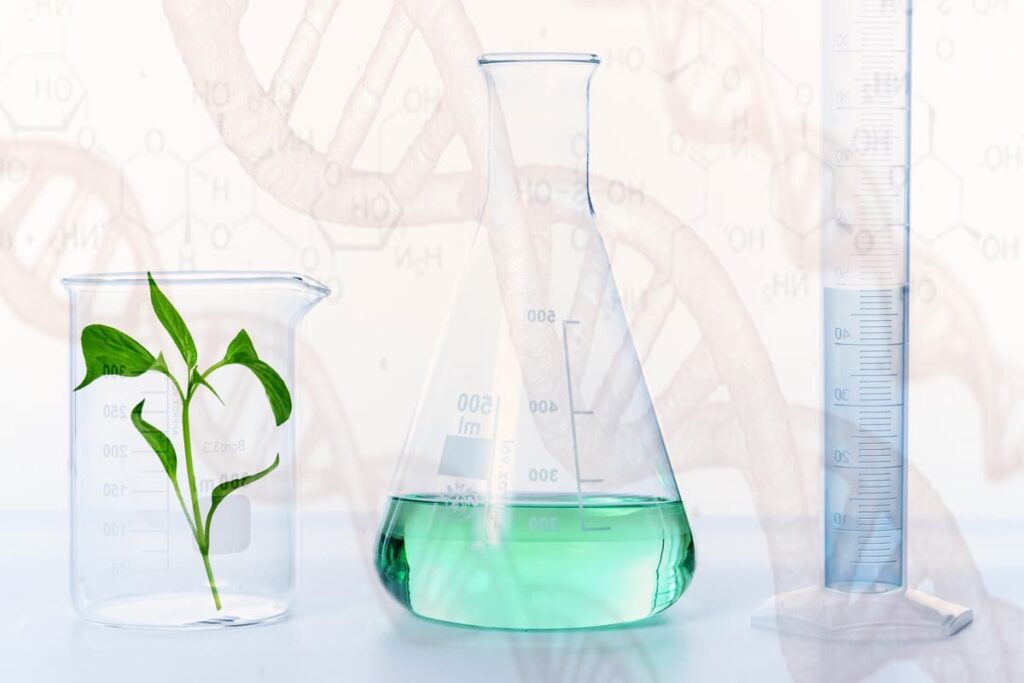
It allows for the precise introduction of specific genes or traits into the crop genome, resulting in improved traits such as increased resistance to pests and diseases, improved nutritional content, and increased yield. One of the main techniques used in crop improvement through biotechnology is genetic engineering, which involves the transfer of specific genes from one organism to another. It allows for introducing traits not naturally present in the target crop, such as drought tolerance or insect resistance.
Another technique used in crop improvement is marker-assisted selection, which involves identifying specific genetic markers associated with desired traits. It allows the selection of crops with the desired traits, which can then be used for breeding programs to produce improved varieties. Plant breeding has dramatically improved the genetic makeup of crops, leading to increased crop productivity and resistance to environmental stresses. It has also contributed to developing new crop varieties that are more adaptable to changing climates and growing conditions.
Role of biotechnology
Biotechnology plays a significant role in crop improvement through genetic engineering and other techniques. Some of the ways in which biotechnology has contributed to crop improvement include:
- Increasing crop yields: Through genetic engineering, crops can be modified to produce higher yields and be more resistant to pests and diseases.
- Improving crop quality: Biotechnology can modify crops to produce higher quality food products, such as fruits and vegetables, that are more nutritious or have longer shelf lives.
- Developing drought-resistant crops: Biotechnology can be used to develop crops resistant to drought, helping to mitigate the effects of climate change on agriculture.
- Enhancing crop resistance to pests and diseases: Genetic engineering can develop crops resistant to pests and diseases, reducing the need for pesticides and other chemicals.
- Improving crop tolerance to extreme environmental conditions: Bio
- technology can modify crops to be more tolerant to extreme environmental conditions, such as high temperatures, salt, or nutrient deficiencies.
- One of the main techniques used in crop improvement through biotechnology is genetic engineering, which involves the transfer of specific genes from one organism to another. It allows for introducing traits not naturally present in the target crop, such as drought tolerance or insect resistance.
- Another technique used in crop improvement is marker-assisted selection, which involves identifying specific genetic markers associated with desired traits. It allows the selection of crops with the desired traits, which can then be used for breeding programs to produce improved varieties.
Biotechnology has the potential to significantly improve the productivity, quality, and sustainability of crops, making it an essential tool for addressing the challenges of feeding a growing global population.
Role of plant breeding & biotechnology in crop improvement of agronomic crops
Plant breeding and biotechnology are essential tools for improving cereal crops, which are a staple food for much of the world’s population. These techniques allow scientists and farmers to develop new varieties of cereal crops that are more productive, have improved nutritional content, and are more resistant to pests, diseases, and environmental stresses. Plant breeding and biotechnology are essential for crop improvement, particularly cereal crops such as rice, wheat, and corn.
In case you missed it: Agricultural Biotechnology in India: Role, Examples, Jobs, Salary, Courses, and Colleges.
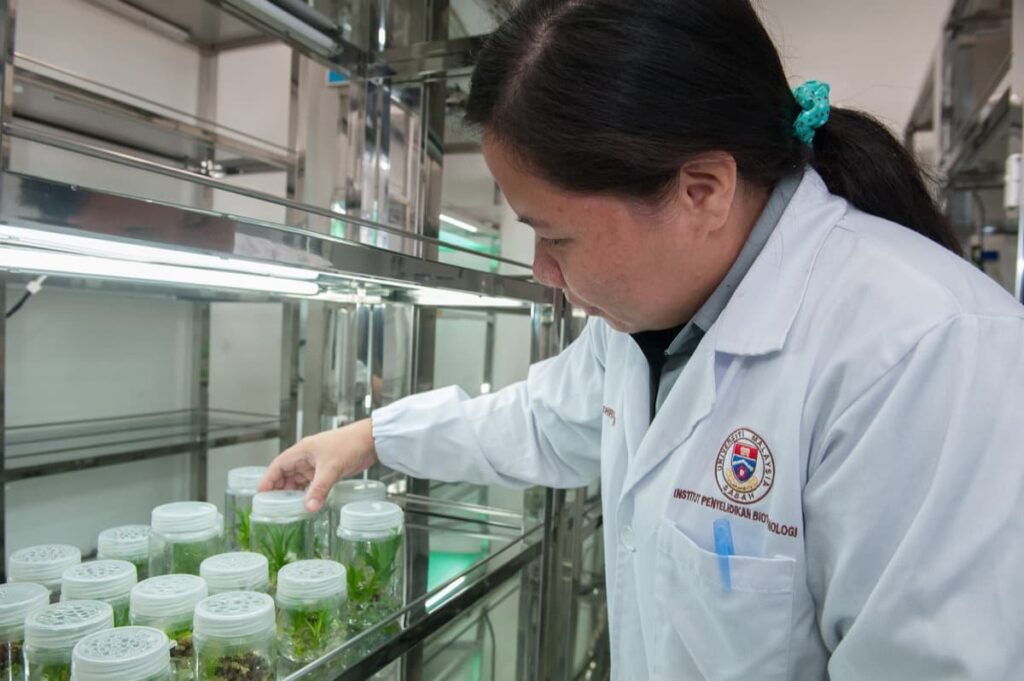
This process can be done through traditional methods, such as selecting plants with the desired traits and crossing them, or through more modern techniques, such as genetic engineering. Biotechnology, on the other hand, involves using scientific techniques to modify the genes of plants, animals, and microorganisms to produce new products or improve their characteristics.
It can be done through techniques such as gene editing, which allows scientists to make precise changes to an organism’s DNA, or through transferring genes from one organism to another. In the case of cereal crops, biotechnology can be used to introduce genes that confer traits such as disease resistance or drought tolerance or improve the crops’ nutritional content.
Applications of Biotechnology to Agronomic Crops
- Genetic modification: This involves introducing a gene from one organism into another to enhance desired traits, such as resistance to pests, diseases, or drought. Examples include genetically modified corn, soybeans, and cotton.
- Marker-assisted selection involves using genetic markers to identify and select plants with specific desired traits, such as improved yield or disease resistance.
- In vitro propagation involves using tissue culture techniques to propagate plants from small tissue samples rather than seeds or cuttings. It can be used to propagate rare or endangered species or to create genetically uniform crops.
- Molecular breeding involves using molecular techniques to identify and select plants with desired traits, such as improved nutritional content or disease resistance.
- Biofortification: This involves enhancing the nutritional content of crops through biotechnology, such as genetically modifying rice to contain higher levels of vitamin A.
- Microbial inoculants use beneficial microorganisms, such as nitrogen-fixing bacteria, to improve soil fertility and crop yield.
- Plant virus-based vectors: This involves using plant viruses to deliver genes into plants, which can be used to introduce new traits or to control pests and diseases.
Role of plant breeding & biotechnology in vegetable crop improvement
- Development of improved varieties: Plant breeding techniques have been used to develop improved varieties of vegetable crops resistant to diseases, pests, and environmental stresses. These varieties are more productive and have higher yields, which helps to meet the increasing demand for vegetables.
- Increased nutrient content: Biotechnology techniques such as genetic modification have increased the nutrient content of vegetables, such as vitamin-enriched tomatoes and rice. It helps to address malnutrition and improve the health of people who consume these vegetables.
- Improved taste and quality: Plant breeding has also been used to develop varieties of vegetables with improved taste and quality characteristics. It has helped to increase the demand for these vegetables, leading to increased production and income for farmers.
- Increased production: Plant breeding and biotechnology have also contributed to the increased production of vegetables by improving production efficiency. It includes developing varieties that are more resistant to pests and diseases, reducing the need for pesticides and other chemicals, and increasing water use efficiency.
In case you missed it: Blockchain Technology in Agriculture: A Way to Future Sustainability and Role in Supply Chain.
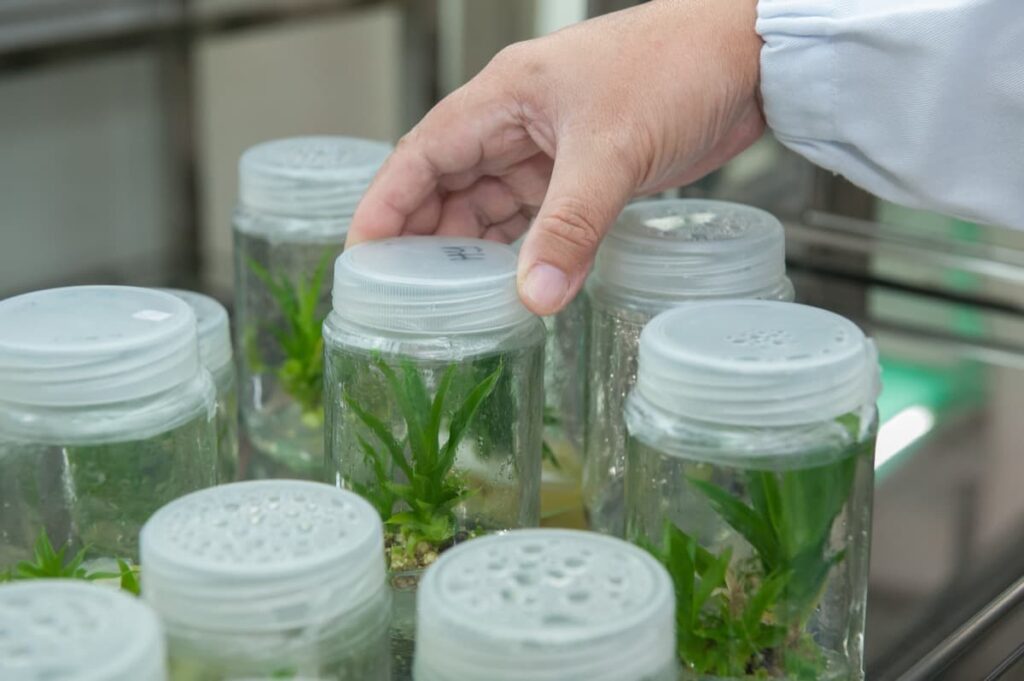
Applications of biotechnology in vegetable breeding
- Genetic engineering: This involves the insertion of specific genes into the genome of a vegetable to introduce desired traits, such as disease resistance or improved yield.
- Tissue culture involves growing and cultivating plant cells or tissues in a laboratory setting. Tissue culture can produce large numbers of genetically identical plants for commercial use.
- Marker-assisted selection: This involves using genetic markers to identify plants with desired traits and improve the efficiency of breeding programs.
- Genetic modification involves using biotechnology to alter a plant’s genetic makeup to introduce or remove specific traits.
- Molecular breeding involves using molecular techniques, such as DNA sequencing and gene expression analysis, to identify and select plants with desired traits.
- Gene editing: Using techniques such as CRISPR/Cas9, scientists can edit the genes of vegetable crops to improve traits such as disease resistance, drought tolerance, and nutritional content.
- Genetic engineering: Scientists can insert specific genes from other organisms into vegetable crops to improve desired traits. For example, tomatoes have been genetically engineered to contain a gene from the winter flounder, which allows them to survive cold temperatures.
- Plant tissue culture: This technique involves growing plant cells or tissues in a laboratory setting, which can be used to produce large numbers of identical plantlets. This method can be used to produce disease-free plants and to preserve rare or endangered plant species.
- DNA sequencing: Scientists can use genetic markers and DNA sequencing to identify the genes responsible for specific traits in vegetable crops. This information can be used to breed plants with the desired traits selectively.
- Micropropagation: This technique involves using small pieces of plant tissue to produce many plants. This method can be used to produce large quantities of plants for commercial purposes or to produce plants that are resistant to diseases or pests.
Benefits of vegetable crops
- Production of high-quality, disease-free planting material for commercial seed production.
- The combination of recombinant DNA technology, gene transfer methods, and tissue culture techniques has resulted in efficient transformation and production of transgenic crop plants in many crop plants.
- Plant breeders introduce desirable traits into crops while eliminating undesirable traits.
- Genetic engineering is used to obtain the best crop variety.
Benefits and risks of agricultural biotechnology
Agricultural biotechnology uses scientific techniques to improve plants, animals, and microorganisms for specific agricultural purposes. Some of the potential benefits of agricultural biotechnology include the following:
- Increased crop productivity and yield: Biotechnology can be the use of developing crops that are more resistant to pests, diseases, and environmental stressors, which can lead to higher crop yields and reduced food waste.
- Improved nutrition: Biotechnology can be used to enhance the nutritional content of crops, such as by increasing the levels of vitamins and minerals in food.
- Reduced reliance on chemicals: Biotechnology can be used to develop pest and disease-resistant crops, reducing the need for chemical pesticides and herbicides.
- Increased efficiency: Biotechnology can improve agriculture’s efficiency by developing crops that are more tolerant of drought, heat, and other environmental stressors.
In case you missed it: 12 Best Agriculture Business Ideas in the USA: A Beginners Guide for Making Profits
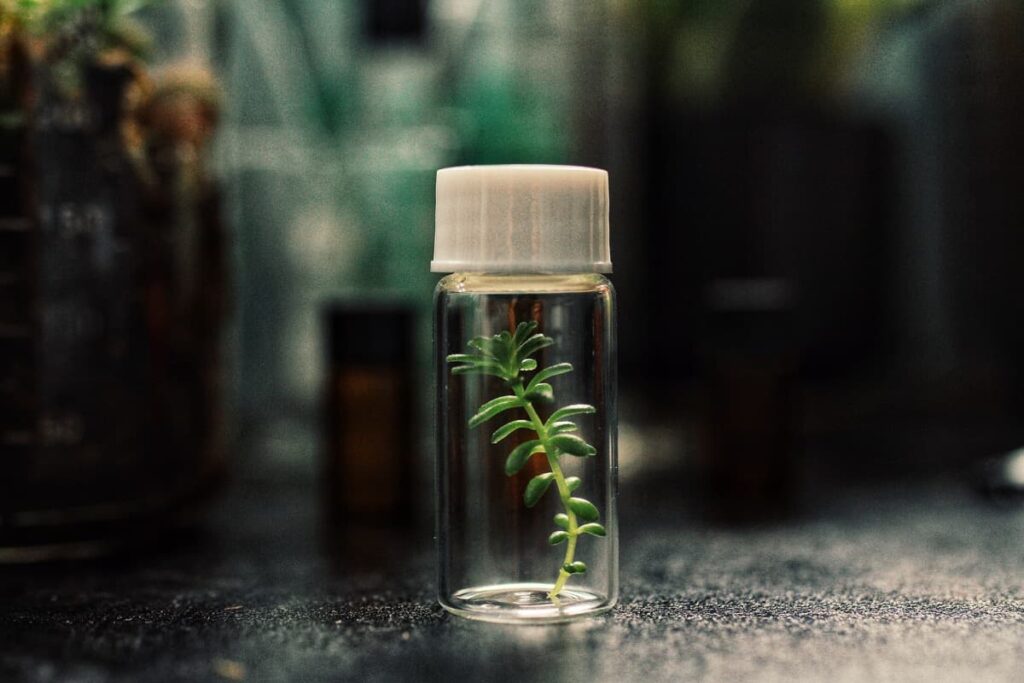
Potential risks of agricultural biotechnology
- Environmental impacts: There is concern that genetically modified organisms (GMOs) could affect the environment by affecting the populations of other species.
- Health risks: Some people are concerned that consuming genetically modified food could have adverse health effects. However, there is currently no scientific evidence to support this claim.
- Economic impacts: Biotechnology can be expensive, and there is concern that it could increase the price of food or create economic inequalities between farmers who have access to biotechnology and those who do not.
- Ethical concerns: There are also concerns surrounding the use of biotechnology in agriculture, such as the potential for companies to patent genetically modified organisms and the impact on traditional farming practices.
Conclusion
Plant breeding and biotechnology have played a significant role in improving agronomic and horticultural crops. Through traditional plant breeding techniques, scientists have developed new varieties that are resistant to pests and diseases, have higher yields, and are more adaptable to different growing conditions. Additionally, biotechnology has allowed the development of genetically modified crops with improved traits such as drought tolerance, herbicide resistance, and higher nutritional content.
Plant breeding and biotechnology have also played a crucial role in producing horticultural crops such as fruits, vegetables, and ornamental plants. Through developing new varieties, horticultural crops can meet the increasing demand for fresh produce and ornamental plants. Overall, plant breeding and biotechnology have contributed significantly to improving agronomic and horticultural crops, leading to increased food security and sustainability in agriculture.
- Budget Friendly Sheep Shed Ideas: Cheap and Low-Cost Tips
- How Much Do Cattle Farmers Make: Revenue Streams in Cattle Farming
- Management Pests and Diseases in Your Cotton Field
- Sheep Farming Business Plan for Beginners
- Aquaponic Farming at Home: A Step-By-Step Guide
- Profitable Village Farming Business Ideas in 2024
- High-Yield Aquaculture: Fast-Growing Fish for Farming
- Effective Fish Pond Construction Techniques for Beginners
- Irrigation and Water Management in Pineapple Farming
- Blossom to Harvest: Mastering Flowering and Pollination in Papaya Farming
- Pig Fattening Essentials: From Selection to Sale for Beginners
- Raising Wagyu Cattle: A Complete Guide for Premium Beef Production
- Soil Types and Their Water Holding Capacity
- Optimizing Irrigation Schedules for Coconut Groves for Enhanced Yield
- Espresso Your Garden: Coffee Grounds for Healthier Acid-Loving Plants
- The Best Soil Mix for Snake Plants: How to Mix Your Own Snake Plant Soil
- Green Thumb Success: Expert Tips for Cultivating Greenhouse Beans All Year Round
- Bloom All Year Round: The Ultimate Guide to Indoor Hyacinth Care
- Eco-Friendly Gardening: How to Make Liquid Fertilizer from Kitchen Waste
- Ultimate Guide to Grow Anise in Pots: Explore Seed Propagation to Harvesting
- Guide to Raising Chester White Pigs: Discover Breed Facts to Growth Management
- Mastering the Elegance: The Ultimate Guide to Weeping Cherry Tree Care, Planting, and Maintenance
- Ultimate Guide to Planting Garlic in Grow Bags: Growing Strategies for Beginners
- How to Fix Spider Plant Leaf-Related Problems: Natural and Organic Remedies
- 10 Reasons Why Your Tulsi Plant is Shedding Leaves: Home Remedies and Solutions
- Optimizing Growth and Yield: The Advantages of Palm Bunch Ash Fertilizer
- Utilizing Neem Oil Extract as a Natural Pesticide for Hydrangea
- From Soil to Harvest: Various Ways in Which Farmers Can Use AI Tools
- Steps to Encourage and Induce Citrus Flowers: A Comprehensive Guide
- How to Fix Snake Plant Leaf-Related Issues: Natural and Organic Remedies
- Transform Your Garden into a Fragrant Oasis with Raat Ki Rani (Night Blooming Jasmine)
- Discover the Ideal Chicken Breeds for Philippine Farms
- How to Create a Poultry Egg Farm Business Plan for Profits
- Grow Lemon Cucumbers Like a Pro: Insider Techniques for Bountiful Yields
- Ultimate Guide to Caring for Your Pink Princess Philodendron: Tips for Thriving Variegation
- Areca Nut Profit Per Acre: Calculating Yield and Cost of Cultivation
